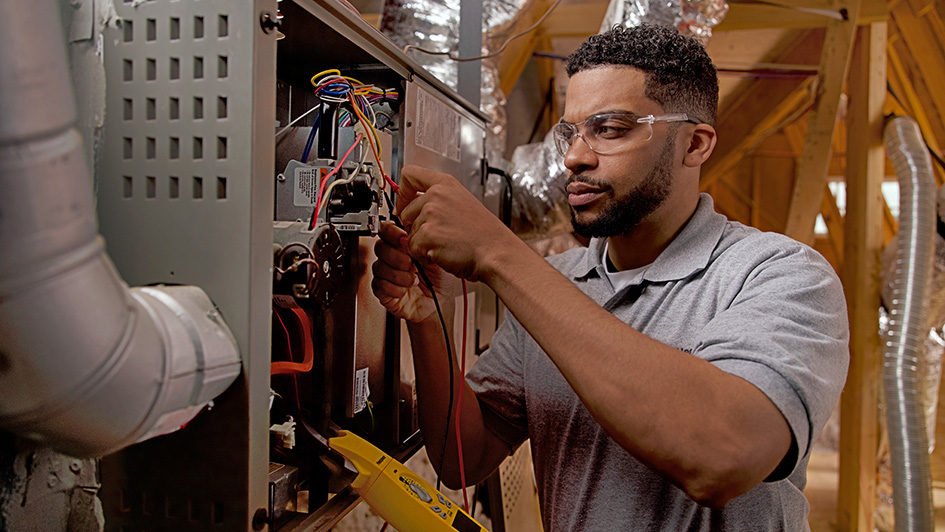
A furnace is often a background player for your home, helping keep you warm across the cold winter months. It frequently won't be noticed until something goes wrong.
One root cause may be that your furnace has a cracked heat exchanger. It can be a safety risk, so it’s worthwhile to know the symptoms of a cracked heat exchanger and what to do if you are worried that may be the problem.
What Is a Heat Exchanger in a Furnace?
A heat exchanger helps transition heat from the combustion chamber in your furnace to the air that moves through the ventilation. It generally does this using coils or tubes that heat the air while functioning as a barrier to keep gas produced in the combustion chamber, called flue gasses, from getting out into your home.
Is a Cracked Heat Exchanger Dangerous?
Because of its central role, it isn't surprising that a damaged heat exchanger can be hazardous. Cracks in the heat exchanger can enable dangerous gasses – like carbon monoxide, which can be lethal – to be distributed across your home.
For this reason, don't ever turn on your furnace if you think there's a crack in the heat exchanger, as this could make the whole household ill. Contact an HVAC professional right away if you are worried your heating has a cracked heat exchanger that needs to be repaired.
Four Signs of a Cracked Heat Exchanger:
- Furnace switches off: Cracks in the heat exchanger could cause your furnace to shut off.
- Strange Smells: If the air leaving your furnace has a strong chemical smell, it may be an indicator that gasses are slipping through cracks in your heat exchanger. These byproducts, which can smell like formaldehyde, are a common warning sign.
- Carbon monoxide alarm initiates or you recognize health problems: If a cracked heat exchanger is relieving carbon monoxide into your home, your carbon monoxide alarm may go off or family members may struggle with signs of carbon monoxide poisoning. Symptoms include headaches, dizziness, weakness, nausea, vomiting or feeling tired. If an alarm goes off or you feel unwell, get out of the home immediately and then call for help.
- Soot: If you find black sooty buildup near the exterior of your furnace, it’s another sign something may be seriously wrong.
What You Should Do if the Furnace Heat Exchanger is Cracked
If you believe your furnace has a cracked heat exchanger, hire a professional experienced in furnace installation Port St. Lucie right away so they can examine your system and, if needed, handle a furnace heat exchanger replacement. Costs will fluctuate depending on the situation, but estimates can roughly suggest $1,000 to $3,000.
Fortunately, the good news is that heat exchangers are often covered by the warranty. You should confirm the warranty paperwork on your furnace, since while the warranty might not cover the entire cost of repairs, it could significantly reduce your bill.
How to Avoid a Cracked Heat Exchanger in Your Home
One of the best ways to prevent a problem in your furnace overall is with routine furnace maintenance. Furnaces offer the most benefits when they operate efficiently. Calling a trained professional to inspect your furnace for broken-down parts, clogged filters and other common problems can help you avoid getting a big bill later on.
It’s also a good idea to take a look at your furnace filters every few months – it’s ideal some filters be changed every 90 days or sooner if they are dirty or grimy. While the filters are not part of the heat exchanger itself, the strain of drawing air through a clogged filter makes your entire furnace work longer to complete its job. And the harder your furnace has to work, the more deterioration pieces like the heat exchanger will endure.




